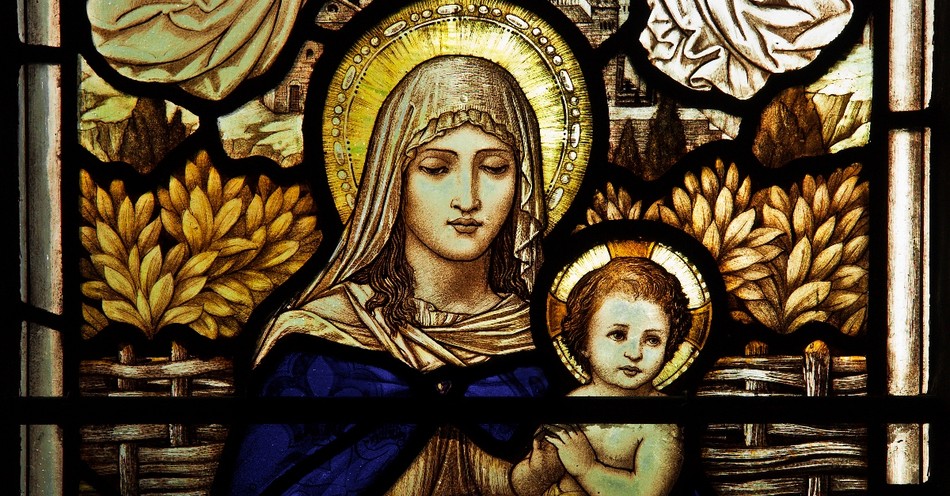Navigating Grief: Finding Solace in the Sorrows of Mary
Introduction: Conceptualizing Grief and the Marian Paradigm
Grief, a ubiquitous human experience, is characterized by profound emotional distress following loss. This article examines grief through a theological lens, specifically exploring the Marian paradigm—utilizing the life and sorrows of the Virgin Mary as a framework for understanding and coping with personal loss. We will analyze the Seven Sorrows of Mary, applying relevant psychological and theological frameworks to illustrate how her experiences offer profound spiritual and emotional resonance for those navigating grief. Key concepts include the stages of grief (Kübler-Ross model), spiritual coping mechanisms, and the concept of intercessory prayer within the Catholic faith.
The Seven Sorrows: A Spiritual Journey Through Loss
The Catholic tradition delineates seven sorrows experienced by Mary, each representing a distinct phase of loss and suffering. These events provide a powerful model for understanding the multifaceted nature of grief. Each sorrow, examined below, offers unique insights into the process of mourning and finding spiritual resilience amidst profound pain. The sequence reflects a chronological progression, allowing for a systematic exploration of Mary’s journey and its relevance to personal experiences of grief.
1. The Prophecy of Simeon: Anticipating Loss and the Acceptance of Suffering
Simeon's prophecy foreshadowed Mary’s future suffering, introducing the concept of preemptive grief – the anticipation of an impending loss. This highlights the importance of emotional preparation and acceptance in the grief process. Theological understanding of divine will and acceptance of suffering are central themes mirroring concepts found in existential therapy which emphasizes the acceptance of life's inherent suffering.
2. The Flight into Egypt: Navigating Trauma and Finding Sanctuary
The Flight into Egypt exemplifies the experience of trauma and displacement within the grief process. Mary's resilience in seeking refuge and protection parallels the need for individuals experiencing grief to find secure environments and supportive relationships. This aligns with the attachment theory which postulates that secure attachment figures are crucial for navigating stressful life events.
3. The Loss of the Child Jesus in the Temple: Experiencing Anxiety and the Restoration of Hope
This sorrow exemplifies the acute anxiety and fear associated with loss, even temporary separation. The eventual reunion with Jesus symbolizes the potential for restoration of hope and the power of faith amidst despair. This resonates with the cognitive behavioral therapy (CBT) approach, which focuses on reframing negative thoughts and restoring a sense of control.
4. Mary's Encounter with Jesus on the Way to Calvary: Witnessing Suffering and Empathetic Connection
Mary's participation in Jesus' suffering exemplifies the concept of vicarious trauma – experiencing emotional distress by witnessing the pain of others. This emphasizes the importance of emotional support and the power of shared experience in alleviating grief. This echoes the tenets of social support theory which emphasizes the role of social networks in buffering against stress.
5. The Crucifixion: Confronting Ultimate Loss and the Transcendence of Faith
The Crucifixion represents the ultimate loss, reflecting the profound impact of death and the intense emotional responses associated with it. Mary's unwavering faith, despite the immense sorrow, underscores the potential for spiritual growth and finding meaning amidst profound loss. The concept of faith as a coping mechanism is central to various theological and psychological frameworks.
6. The Deposition from the Cross: Experiencing the Physicality of Grief and the Power of Ritual
This sorrow highlights the physical and sensory aspects of grief – the visceral experience of holding a deceased loved one. The ritual of the Deposition offers a powerful model for the importance of acknowledging and expressing grief through rituals and ceremonies. This aligns with the significance of mourning rituals across diverse cultures.
7. The Burial of Jesus: Accepting Finality and Embracing Hope in Resurrection
The Burial symbolizes the acceptance of finality and the beginning of the healing process. Mary's faith in the resurrection offers hope and a promise of future reunion, mirroring the importance of finding meaning and purpose in the face of loss. This resonates with the stages of grief model (Kübler-Ross), specifically the acceptance stage.
Mary as a Model for Navigating Grief: Theological and Psychological Perspectives
Mary’s unwavering faith, coupled with her deep empathy and compassion, offers a powerful model for those experiencing grief. Her journey underscores the importance of: seeking spiritual solace, maintaining social connections, engaging in self-care practices, and utilizing healthy coping mechanisms. This aligns with various therapeutic approaches that emphasize these strategies in grief management.
Conclusion and Recommendations
This exploration of Mary's sorrows offers a multi-faceted approach to understanding grief, drawing upon theological reflection and psychological theory. The Marian paradigm provides a framework for individuals experiencing loss, emphasizing the role of faith, community, and ritual in navigating this challenging life stage. Further research could explore the efficacy of using the Marian model as a therapeutic intervention for grief counseling, focusing on qualitative studies to assess its impact on individuals’ emotional and spiritual well-being. The applicability of this framework transcends religious boundaries, offering a powerful illustration of resilience and the human capacity for hope amidst suffering. The study of various religious and cultural perspectives on grief could enrich future understanding of this universally shared experience.
Reader Pool: How might a deeper understanding of the Marian paradigm inform the development of more effective grief counseling techniques, incorporating both spiritual and psychological approaches?
```









No comments yet. Be the first to share your thoughts!